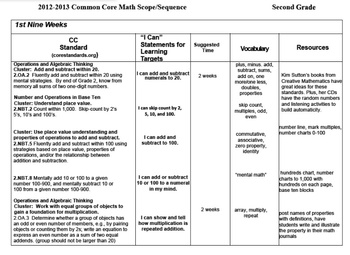Common Core North Carolina Pacing Guide
Posted By admin On 15.01.20STANDARD COURSE OF STUDY North Carolina's Standard Course of Study defines the appropriate content standards for each grade level and each high school course to provide a uniform set of learning standards for every public school in North Carolina. These standards define what students know and should be able to do. Based on a philosophy of teaching and learning that is consistent with current research, exemplary practices, and national standards, the Standard Course of Study is designed to support North Carolina educators in providing the most challenging education possible for the state’s students. The goal of these standards is to prepare all students to become career and college ready.
Common Core Language Arts Pacing
With these standards as the foundation, local school leaders make decisions about the comprehensive curriculum that they choose to deliver to students so that they can reach the content standards for every grade and subject. In addition, local schools and districts may offer electives and coursework that is above and beyond the NC Standard Course of Study's content standards. Classroom instruction is a partnership between the state, which sets content standards in the Standard Course of Study, and local educators who determine which curriculum materials they will use to deliver instruction to reach the standards.

Marzano’s What Works in Schools: Translating Research into Action (2003) and School Leadership That Works (2005) presents research that identifies factors at the school (and district) level that have a positive impact on student achievement. Factors are categorized into school-level factors, teacher-level factors, and student-level factors. School-level factors include a guaranteed and viable curriculum and challenging goals and effective feedback. Based on this research, Currituck County Schools began work on creating a “minimum standard” for delivering a guaranteed curriculum that is aligned with NC Standards and common assessments (for providing effective feedback) for each core subject/course at each grade level. As the district and schools further the development of Professional Learning Communities (PLC) in all schools and at the district level, focus continues to remain on the essential questions that are critical to the function of PLCs: What do students NEED TO LEARN? What evidence will we gather to monitor student learning—how will we know WHEN THEY HAVE LEARNED IT?
Common Core North Carolina Pacing Guides
What will we do if/when students EXPERIENCE DIFFICULTY IN THEIR LEARNING? What will we do to ENRICH THE LEARNING OF THOSE WHO DEMONSTRATE PROFICIENCY? How can we use our SMART goals and evidence of student learning to INFORM and IMPROVE OUR PRACTICE? In 2010, teams of teachers began designing curriculum frameworks and district wide common assessments based on the NC Standard Course of Study for all core areas(Reading/Writing, Math, Science, and Social Studies) that all teachers implemented according to a common timeline and used the data to inform instruction. During the summer of 2011, Phase II began bringing teams back together to not only revise these draft tools, but to begin integrating Essential Standards and Common Core Standards into the frameworks as part of the Race to the Top and ACRE initiative.
Essential Standards and Common Core Standards were fully implemented and assessed beginning in 2012-13. We are now into our sixth year of this curriculum review process. Materials and guides posted by grade and subject reflect many hours of work by teachers selected to be part of the curriculum revision team over the summer. As in Phase I and II, these revised frameworks and pacing guides are considered draft documents.
As a means of embracing “continuous improvement” in the area of curriculum delivery, PLCs will meet periodically throughout the school year to review standards, frameworks, and assessment results; refining documents and timelines where necessary. The review process will continue each school year, integrating new teaching and assessment resources provided by DPI and focusing on the district's common instructional practices goals. Documents have been posted to the website through Google docs, which can be downloaded for use, and editing (for feedback purposes). The curriculum guide and assessment process is a cycle that will enable us to continuously evaluate our pacing, teaching, and student learning as we learn more about effective practices. Common Instructional Framework. As part of our continuous improvement plan and our goal for developing 21st century classrooms that produce 'Career and College READY' students, a Common Instructional Framework is being developed with and for teachers to implement in their classrooms. This process and framework will align with the district's implementation of MTSS (Multi-tiered Systems of Support, as we work to define our core instruction.
Teachers will plan according to the common instructional framework (i.e., whole group, small group, and individual work) and intentionally use instructional practices that focus on being student centered, data-driven, collaborative, and personalized. Ensuring that students are taught and learn at a rigorous level is essential to improving overall student achievement. The “Understanding by Design” philosophy and stages of planning for learning (Grant Wiggins and Jay McTighe);. The need to create broad planning structures that allow for teacher/school individuality in material selection and lesson plan implementation;. The role of Essential Questions in sparking and using inquiry as an instructional method;. The process of Continuous Improvement;. The role of Bloom’s Revised Taxonomy in designing lessons and assessments;.
The purpose and use of Formative Assessments vs. Summative Assessments;. The purpose of Common Assessments;. The role and importance of writing as a part of instruction and assessment;.
The role and importance of aligning our teaching and assessments with the state assessments our students' proficiency will be measured against. The need to create broad planning structures that allow for teacher/school individuality in material selection and lesson plan implementation.